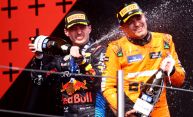Tennis and squash are two of the most popular racket sports, each with unique experiences for players and spectators. They might look alike at first glance, but there are some differences in equipment, gameplay, and court requirements. There came a time when squash was on the verge of non-existence, but thankfully squash clubs ensured that the sport wouldn't die out easily.
Let's dive into each one so you can better understand the differences between them and get the right one that will suit your play style.
Tennis vs Squash: Which Racket Sport is Which?

Among racket sports, tennis is one of the most popular games played either in single or doubles format. The ball is hit over a net with a racket so it lands in the opponent's court in a way that the opponent cannot return.
Each unsuccessful return increases the opponent's score; thus, precision and strategy are critical to play the game. Tennis courts differ in their surface- the grassy, clay, and hard courts- as this changes the ball bounce and the game speed.
On the other hand, squash, sometimes called "squash rackets," is a fast-paced game played in an enclosed, four-walled court with a smaller, hollow ball. The idea is to hit the ball against the front wall so the opponent cannot return it.
Unlike tennis, squash uses the court walls to its advantage, with the ball bouncing off any wall before it must be returned. This difference makes squash much more dependent on quick reflexes and spatial awareness, as players need to react fast to fast ricochets.
Read Alsori: Australian Tennis Star Jordan Thompson Stuns Fourth Seed Casper Ruud; Set Up Clash With Kei Nishiko
Where Did They Come From?
Tennis originated in medieval France, where players first played with the palm of their hand and was then converted into a racket sport in the 18th century.
The name "tennis" comes from the French word "tenez" which means "hold" or "receive." Tennis evolved as a sport recognized across international lines with various forms of courts and competitions.
Meanwhile, squash originated during the late 19th century when the sport was played in England at the Harrow School. The kids created a lively and great game out of this game using a deflated ball since it got squashed once hit on the ground.
It became widely followed and started building its way across various continents. At first, the continent where the game was taken was America, which started its base with St Paul's School in 1884.
Apparatus Distinctions
Rackets: Squash rackets are lighter with an elongated and egg-shaped head, fitting to quick movements in tiny areas. Tennis rackets are heavy and have more extended heads because the games use larger and higher-bouncier balls.
Balls: Squash uses a small rubber ball with low bounce, ideal for enclosed spaces and wall rebounds. Tennis balls are large, designed for various surfaces, and provide a good bounce that keeps the game moving on open courts.
Rules and Scoring
In squash, a shot has to hit the front wall before hitting the floor. It can rebound many times on the side and back walls and thus creates complex plays. The scoring is mostly rally-based, and the server is awarded points in the most common variations.
It will travel across to the other side of a playing field to land on designated areas that belong to a competing individual, with each participant earning points by either maintaining a lead of at least two at deuce to preserve this or win each rally and thus build leads with this system.
Court Distinctions, Important Skills, and More
The squash court is smaller in dimensions and bouncy wall, which demands quick rallies due to shot angles or strategies. Tennis rallies are much longer and cover far more ground on an open court.
Power and accuracy are more important in tennis, whereas agility, running endurance, and fast reactions dominate squash.
Squash courts are 32 feet in length and 21 feet in width with four walls, which the players use strategically.
Tennis courts are larger and measure 78 feet in length and 27 feet in width for singles, while doubles measure 36 feet in width. The game is also affected by grass, clay, and hard court surfaces.
Related Article: Squash President 'Extremely Disappointed' With Squash's Exclusion From Olympics 2024
© Copyright 2026 Sports World News, All rights reserved. Do not reproduce without permission.










